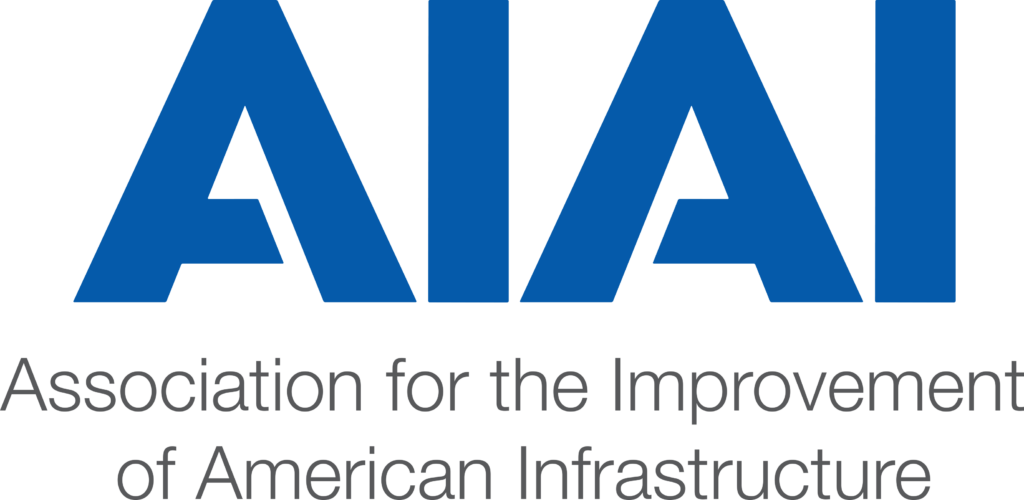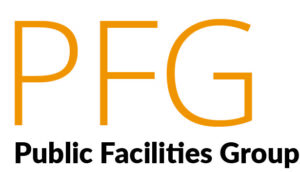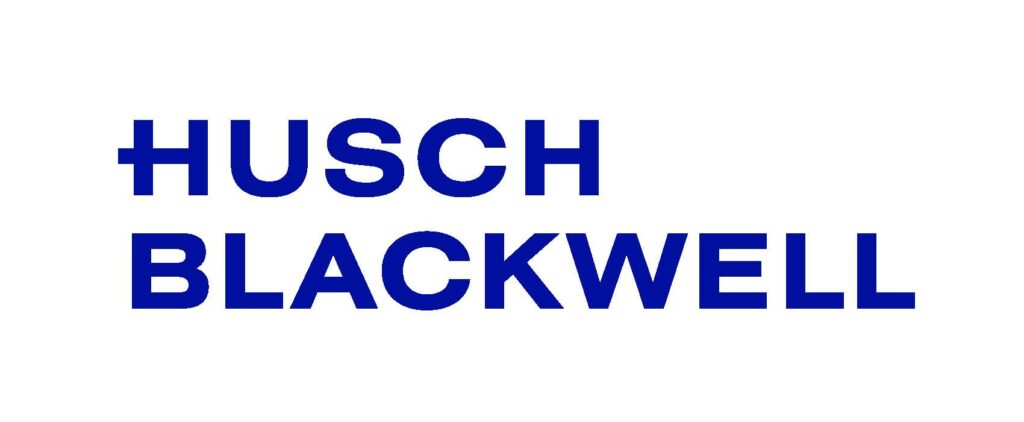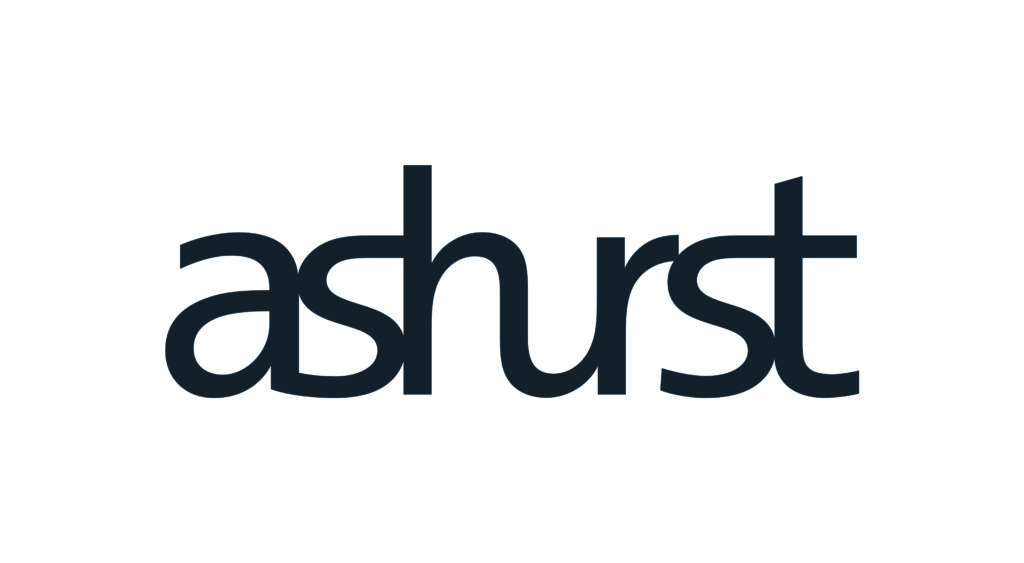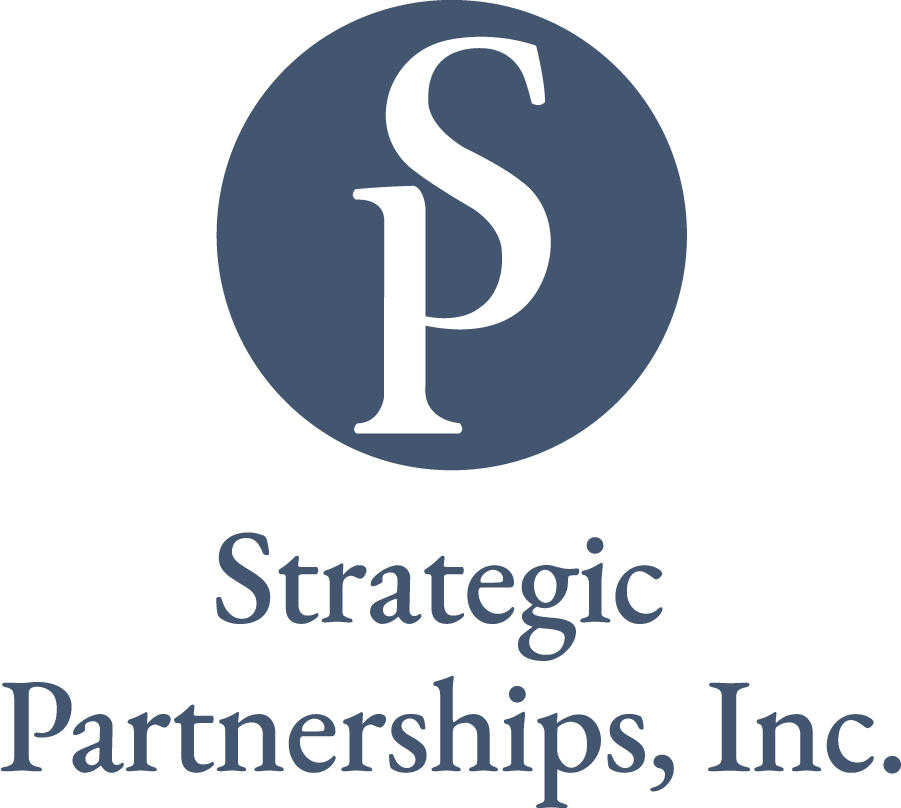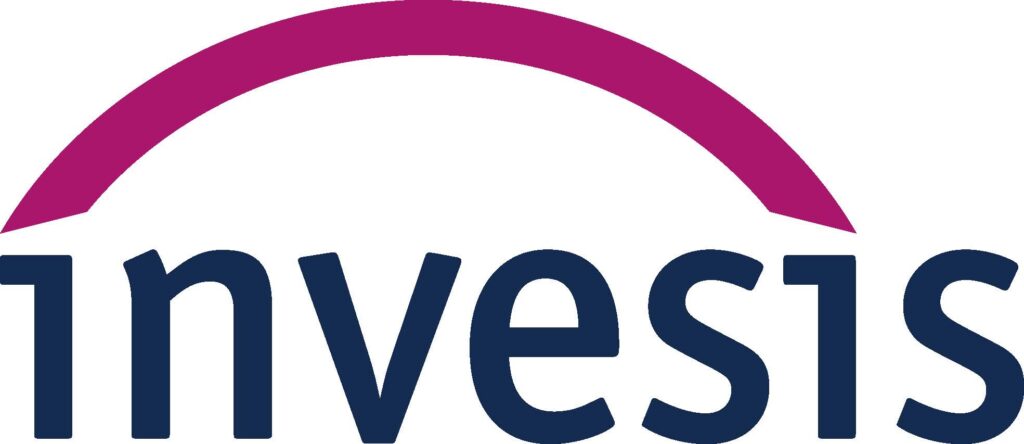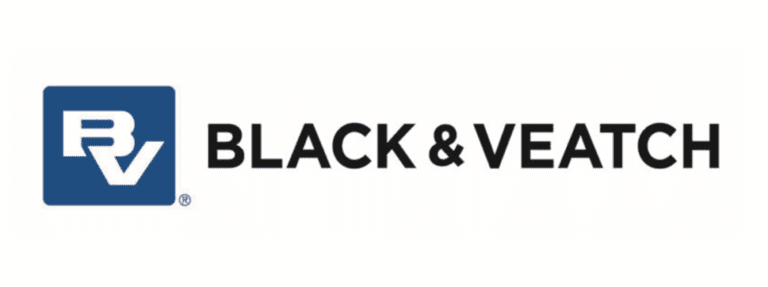Agenda
Monday, Mar 14
-
7:00 am — 1:00 pm
Conference Check-In, Registration, and Exhibitor Set-Up
-
7:30 am — 9:00 am
P3 101 Questions and Answers Breakfast Workshop (Open to Public Sector Attendees Only | Advanced Registration Required)
Dallas Ballroom A2Join industry leaders and AIAI members for breakfast and an interactive conversation specifically tailored to the needs of agencies evaluating P3s. This pre-conference session is designed for those beginning to explore P3s, helping them understand where P3s are applicable, and how they can save money and time when dealing with upgrades, repairs, and maintenance. Learn when P3s do or do not make sense, and what major considerations need to be made when choosing this route, including the critical first steps.
Presenters:Sue Lee, CEO, Lesura StrategiesBobby Lewis, National Practice Consultant, HNTBMary Scott Nabers, President/CEO, Strategic Partnerships, Inc.Sallye Perrin, Senior Vice President, WSPChris Shaeffer, Senior Program Manager, RS&HAdam Sheets, Alternative Project Delivery Group Lead, Garver USA -
9:00 am — 11:00 am
Site Tour - P3 Hits the Highway: A Tour of Dallas’s LBJ Express Advanced Registration Required | Meet in Lobby of Sheraton Hotel for Shuttle Pickup
Experience firsthand one of the largest public-private partnership transportation projects in Texas! The LBJ Express project team will host a limited number of conference attendees for a free, two-hour bus tour of the $2.7 billion highway reconstruction project along Interstates 635 and 35E and Loop 12, which was completed in September 2015. Tour participants will get an up-close look at the roadway, including the innovative managed lanes (known as TEXpress Lanes), which utilize real-time data to adjust toll rates to reduce congestion. The tour will also include a stop at the LBJ Express operations center for a look at the technology behind the 13-mile P3 project.
The tour is now sold out! If you wish to be added to the waitlist, please email Sarah Plombon at splombon@accessintel.com.
-
9:30 am — 10:30 am
P3Direct Owners’ Workshop: Communicating Stakeholder Value
Dallas Ballroom D3Lack of communication is the easiest way to derail a project. Building an educated stakeholder base takes effort, but is vital to program success. In this interactive workshop, we encourage participants to discuss the importance of getting your community's backing early on in the process.
-
11:15 am — 12:45 pm
P3Direct Bootcamp: Finance (Open to Public Sector Attendees Only | Advanced Registration Required)
Dallas Ballroom D3One of three P3Direct boot camps, this conversation will focus on the use of PABS, TIFIA, taxable debt, and other financing tools. Lunch will be provided.
-
1:00 pm — 1:30 pm
Conference Welcome and Opening Keynote: Dale Bonner, Executive Chairman, Plenary Concessions
Dallas Ballroom BCThe use of P3 continues to expand with public sponsors delivering a range of projects using a variety of P3 models and solutions. In 2022, state and local governments are excited by the recent passage of the Infrastructure Investment and Jobs Act and public sector leadership will be a key ingredient needed to build on the recent progress and chart a future for P3s in the US. Setting the stage for this year’s conference, Plenary Concessions Executive Chairman Dale Bonner will recap major developments of the past year and highlight opportunities potentially emerging that are rising in 2022.
-
1:30 pm — 2:15 pm
Opening Conversation: Mondays With Marshall
Dallas Ballroom BCEvery Monday, AIAI hosts “Mondays with Marshall”, where the association’s Senior Policy Advisor Marshall Macomber shares insight on policy and legislative updates on Zoom. Conference guests are invited to enjoy a glimpse into this exclusive AIAI member experience as Marshall brings the animated discussion live to the main stage, joined by some of AIAI’s regular participants.
Moderator:Marshall Macomber, Senior Policy Advisor, Association for the Improvement of American Infrastructure (AIAI)Panelists:Lisa Buglione, Executive Director, Association for the Improvement of American Infrastructure (AIAI)Jeremy Ebie, Founder & CEO, Phoenix Infrastructure GroupSia Kusha, Senior VP, Group Head Business Development & Partnering, Plenary AmericasSeth Miller Gabriel, Director, P3 Co-Lead, BDOMary Scott Nabers, President/CEO, Strategic Partnerships, Inc.Stephen Rae, General Counsel, Liberty Mutual Surety -
2:15 pm — 2:30 pm
Opening Fireside Chat: Fifteen Minutes with Dr. Morteza Farajian, Executive Director of the Build America Bureau
Dallas Ballroom BCJoin the Build America Bureau’s finance guru Morteza Farajian and AIAI’s Marshall Macomber for a fast-paced Q&A on the new infrastructure bill. Moving quickly, they’ll touch on TIFIA, RRIF, PABs, and even advisors – as they discuss the Bureau’s programs for the growing US P3 market.
-
2:30 pm — 3:15 pm
Opening Plenary: New Era of Infrastructure
Dallas Ballroom BCJoin these thought leaders from across the industry for a lively discussion on the “new era of infrastructure”. With the influx of federal dollars and a drive for more integrated infrastructure solutions, this group will discuss what the next chapter for infrastructure could look like. What does this mean for the public sector and private sectors? And how can we thoughtfully develop programs that bring together both traditional and non-traditional sectors.
-
3:15 pm — 3:30 pm
Networking and Coffee Break
-
3:30 pm — 4:30 pm
Why do a P3? Building the Business Case for a P3 and Selling it to Your Community
Dallas Ballroom D3What business considerations must a government review before starting the P3 process? This panel will discuss the elements that must be considered as the public builds out the business case for a P3, and share ideas on how to effectively communicate it to the community at large.
-
3:30 pm — 4:30 pm
The Coming Infrastructure Boom
Dallas Ballroom D2The Infrastructure Investment and Jobs Act promises a once in a generation investment in US infrastructure. And along with the expected explosion in new infrastructure projects across sectors, questions also arise. How can owners ready themselves to deploy hundreds of millions of new dollars in a relatively short timeframe? With an already tight labor market, which projects will contractors choose to pursue, and which projects will they ignore because the potential risks are too high? How will this never-before-seen investment affect construction cost inflation, and labor costs? Will the deployment of new funding mean fewer projects will pursue private financing? Join a panel of experts who will discuss the coming infrastructure boom, and discuss how the associated challenges might be overcome.
-
3:30 pm — 4:30 pm
Using P3s to Impact Public Policy and Project Delivery
Dallas Ballroom D1As part of Husch Blackwell’s annual Trends Report, the increase in P3 projects continues to be steep since the beginning of this period of uncertainty. However, while some of this can be attributed to economic stress, a meaningful number of project deliveries are inclusive of forwarding larger public policy goals. One example is the use of P3 project delivery to invest in climate change objectives; public partners are beginning to employ P3 as part of their net-zero targets and the recent infrastructure bill places a priority on similar policy objectives.
Our panel will discuss the various ways alternative project delivery is making future climate goal investments in current projects. From finance to innovation, to integrated project undertakings, P3 is providing collaborative results.
Moderator:Charles Renner, Partner, Husch BlackwellPanelists:Jon Conant, Director of the Center for Alternative Financing and Procurement (CAP), Texas Facilities CommissionThiam Giam, Senior Managing Director, Business Development, Black & VeatchJohn Medina, Vice President – Senior Credit Officer, Moody's Investors ServicesThomas Mulvihill, Managing Director, Head of Infrastructure & P3, KeyBanc Capital MarketsJim Wells, Executive Vice President, The Weitz Company, LLC -
3:30 pm — 4:30 pm
The EV Revolution – How state, local and utility entities are planning for the rollout of a $5 billion national EV charging network
Dallas Ballroom A3The Joint Office of Energy and Transportation has announced a $5 billion dollar National Electric Vehicle Infrastructure (NEVI) funding program under the Infrastructure Investment and Jobs Act (IIJA) that will establish a national network of charging infrastructure along designated alternative fuel corridors. This program has the potential to accelerate electric vehicle deployment as well as provide more equitable access and economic development opportunities for historically underserved communities. Hear from key State, Local and Utility decision makers on their EV infrastructure priorities, P3 investment plans and the unique role each will play in the broad ecosystem of EV deployment.
Moderator:Josephine Tucker, Managing Director, Clean Energy and Infrastructure Advisory, JLLPanelists:Michael Kilpatrick, Key Segment Manager, Duke EnergyJannine Miller, Director of Planning, Georgia DOTJennifer Sanders, Executive Director, North Texas Innovation AllianceDavid Treichler, Director Strategy and Technology, Oncor -
3:30 pm — 4:30 pm
How to P3 for Small to Mid-Sized Projects and Communities: Lessons Learned in Delivering Local Serving Projects under $500M
Dallas Ballroom A2A P3 is not one deal structure; it is a continuum of private involvement in public projects and public investment in private projects. This session will explore innovations in hybrid real estate/social infrastructure P3 projects and reviews the utility of various procurement, project delivery, and financing structures that should be considered for small- to mid-sized projects and/or local governments. Our focus will be on best practices and lessons learned, presented in an engaging and lively format. This session is designed for public officials who are: Still confused by the definition of a “P3”, Wondering if their deal is large enough to be a “P3”, Overwhelmed by the prospect of a 30- year O&M contract or a fully integrated DBFOM deal structure, and looking for clarity on how a P3 may work for their small to mid-sized projects.
-
4:30 pm — 5:30 pm
How Do I Design a P3? Best Practices in Deal Structuring and Contract Management
Dallas Ballroom D3The basis of all successful P3s is in the structuring of the deal and the management and oversight of the contract. During this session both public and private sector experts will discuss the basic and best practices for P3 deal structuring. They will also share their views on the best practices for contract management for the long-term success of a P3.
-
4:30 pm — 5:30 pm
COVID-19 Impacts on Risk Structures Within the P3 Model
Dallas Ballroom D2The effects of the COVID-19 pandemic have impacted all sectors and supply lines, and coupled with significant inflation raise new questions around risk structures within the P3 model. Through the lens of risk, this panel of experts examines how the pandemic has affected procurement, construction and operations and maintenance phases. Specific case studies and a full range of solutions will be explored in this compelling and timely discussion.
-
4:30 pm — 5:30 pm
Deriving Value from Value-for-Money Analysis
Dallas Ballroom D1The Bipartisan Infrastructure Law has brought Value-for-Money analysis (VfM) to the foreground of the industry’s attention with new federal requirements to conduct a VfM in certain situations. This session will explore these new requirements and discuss the “must haves” for doing a VfM and the benefits of doing it right.
Moderator:Vishal Joshipura, Senior Vice President, Ernst & Young Infrastructure Advisors, LLCPanelists:Sam Beydoun, Project Development Lead, U.S. Department of Transportation, Build America BureauSue Lee, CEO, Lesura StrategiesMark Polston, Senior Vice President, WSP USA Inc Project Development AdvisoryMichael Wawskiewicz, Senior Project Manager, Garver USA -
4:30 pm — 5:30 pm
Public/Private Hotel Development: Challenges and Opportunities in a Post-Pandemic World
Dallas Ballroom A3Learn how municipalities are addressing deal structuring, financing, and budget challenges for convention hotel projects in the COVID environment. Be a part of this interactive session with the City of Abilene, the developer, and bond counsel. From supply chain and labor disruptions, increasing construction costs, and financing challenges to opportunities in fundraising, government incentives, and infrastructure money, these experts will discuss how delivery challenges can be successfully managed. Structured properly, a public/private convention hotel can spur economic impact and even help participating governments fund other facility needs
-
4:30 pm — 5:30 pm
Getting on Track: Learning and Succeeding in the US Transit P3 Market
Dallas Ballroom A2After a lull in major new projects, the US is on the brink of a rail transit construction boom, from the West Coast to Texas to the Northeast. To date, only a handful of domestic rail transit projects have used P3s as a delivery tool, with mixed results. However, growing success with the model abroad and increasing developer interest in the space presents new opportunities to get projects built more quickly and innovatively. Come learn about lessons from past projects, new tools for engaging private sector expertise earlier in the development process, and how our peers abroad are finding success in this market.
Moderator:Michael Rooney, National Practice Consultant, HNTBPanelists:Jonathan Astudillo, P.Eng., Senior Director of Project Development, ACS InfrastructureManan Garg, Senior Director, Design & Construction, Austin Transit PartnershipAli Lauzon, Operations Associate, McKinseyAndrew Quinn, Senior Director, Office of Innovation, LA MetroDavid Wylie, Managing Director, John Laing -
5:30 pm — 7:00 pm
Opening Night Welcome Reception
Expo HallJoin us at this special networking event for all conference speakers and delegates.
Tuesday, Mar 15
-
7:30 am — 8:30 am
Networking Breakfast
Expo Hall -
7:30 am — 9:00 am
P3Direct Bootcamp: Risk Allocation (Open to Public Sector Attendees Only | Advanced Registration Required)
Dallas Ballroom D3In the second of three bootcamps, speakers representing AIAI's P3Direct program will address how risk transfer can deliver value, the types of risk, and the best practices for allocation and mitigation to ensure project success.
Please click here to register.
-
8:30 am — 8:45 am
Morning Keynote: Former US Department of Transportation Secretary Rodney Slater
Dallas Ballroom BCJoin former US DOT Secretary Rodney Slater as he opens day two with the principles of ESG.
-
8:45 am — 9:45 am
Morning Plenary: ESG - The Conversation Continues From Principles To Program and Project Delivery
Dallas Ballroom BCP3s serve as one of the most flexible and powerful procurement mechanisms to design, build, finance, operate, and maintain public works and infrastructure around the globe. Join a dynamic group of industry leaders as they kick off a series of discussions on P3 approaches to infrastructure delivery through the prism of environmental sustainability, social equity, and governance (ESG). We will explore how the industry can enhance the role of ESG in decision-making and the impact these projects are already making on the communities they serve.
Moderator:Jed Freedlander, Managing Partner & Head of Business Development, Phoenix Infrastructure GroupPanelists:Dr. Morteza Farajian, Executive Director, U.S. Department of Transportation, Build America BureauOrion Fulton, Social Infrastructure and Real Estate Leader, ArupAlberto Gonzalez Lalueza, CEO, CintraAmir Nayeri, Deputy Director, Business Development, MeridiamSallye Perrin, Senior Vice President, WSPDr. Shawn Wilson, Secretary of Transportation, Louisiana DOT -
9:45 am — 10:45 am
P3Direct Workshop: Project Readiness (Open to Public Sector Attendees Only | Advanced Registration Required)
Dallas Ballroom D3Public owners and managers: let's talk innovative project delivery. Bring your questions for AIAI's procurement experts as you engage in an interactive discussion on the best practices for delivering cost-efficient, budget certain facilities. Topics will include project identification, budgetary impacts, and strategies for identifying and leveraging new revenue streams.
-
9:45 am — 10:45 am
DC Streetlighting: Spotlighting ESG Principles and a Best Practice Approach to Asset Delivery
Dallas Ballroom BCInnovation, perseverance, project champions, stakeholder engagement and community support. All things that come to mind when describing the DC Streetlighting program. Join this discussion as the project team explores the lessons DCDOT learned as they worked to advance safety and opportunity for their community through this streetlighting program. Delivering so much more than just lightbulbs and a maintenance contract, this P3 enables life-changing new services for residents, delivers on ESG goals and will lock in decades of value and equity in the communities it serves.
Moderator:Adam Hesketh, Chief Financial Officer, SH 130 Concession CompanyPanelists:Jeremy Ebie, Founder & CEO, Phoenix Infrastructure GroupSia Kusha, Senior VP, Group Head Business Development & Partnering, Plenary AmericasKathryn Roos, Deputy Chief Operations Officer, District Department of Transportation -
9:45 am — 10:45 am
The Build America Bureau - It's Not ALL About the Money
Dallas Ballroom D2The Build America Bureau administers Federal credits assistance and financing programs, such as TIFIA, RRIF and PABs with the goal of assisting project delivery through innovative financing methods. The Bureau also provides technical assistance to project sponsors and developers who are contemplating alternative delivery methods to deliver their projects.
In this session, the Bureau will discuss available resources and look ahead to potential new technical assistance programs and other requirements that hold the promise of developing good projects in an efficient and accountable manner to provide benefits while leveraging private investment with local, state, and federal resources.
-
9:45 am — 10:45 am
Mass Timber Buildings: A New Approach to Sustainability and Net Zero Campus Expansion
Dallas Ballroom A3Recognizing the increasing importance a Net Zero approach plays in reducing operating costs in P3 delivery and the increasing coalition participation of institutions pledging to attain net-zero carbon emissions, recent success demonstrates how integrated delivery can meet those goals. As the first building to engage a dramatic reclaimed pumice mine acquired for a future Net Zero campus expansion, the expectations were high for Oregon State University – Cascades’ Edward J. Ray Hall. The project identified three goals for the project: develop a flexible and adaptable prototype for the future, demonstrate the campus’s Net Zero energy goal, and incorporate meaningful use of a mass timber structure. The joint team of Swinerton and SRG developed an integrated strategy that found creative ways to meet these goals and exceed the University’s expectations. This session will explore how an integrated process resulted in achieving these three goals while meeting the University’s budget.
-
9:45 am — 10:45 am
How to Make the Infrastructure Investment and Jobs Act Work for You
Dallas Ballroom A2The Infrastructure Investment and Jobs Act (IIJA) is groundbreaking in its overarching, interconnected theme about what constitutes infrastructure. For owners, the opportunity to access new and expanded resources to fund infrastructure seems almost too good to be true. And the IIJA contains key provisions that will impact the P3 marketplace. How can owners best set themselves up to access new sources of money for new categories of infrastructure? How can P3 developers and contractors be ready for the changes the IIJA will bring to their industry? Join a panel of public sector experts who will survey the IIJA, including its P3 provisions, and bring some clarity to the brave new infrastructure world we are entering.
-
10:45 am — 11:00 am
Networking and Coffee Break
Expo Hall -
11:00 am — 12:00 pm
Reducing Cyber Risk to Revenue Generation and Asset Value in P3s
Dallas Ballroom BCCyber threats are rapidly expanding as ransomware attacks hit every sector of our economy and threatening cyber events unfold in Eastern Europe. In response, DHS's Cybersecurity and Infrastructure Security Agency (CISA) recently released a warning to all owners and operators of critical infrastructure that Russia has the means and motive to disrupt essential services in the U.S. How can a cyber attack affect the value of a P3? Who should manage the cyber risk in P3’s? How are attacks affecting liability, particularly for insurers and other risk managers? In this session, a panel of cyber, insurance and legal experts will provide important insights on current trends and solutions.
-
11:00 am — 12:00 pm
How Do I Keep a P3? Monitoring and Partnership for the Long Term
Dallas Ballroom D3The real work of a P3 lies in the O&M phase: when the public sector must step into the monitoring role, the true test of the partnership begins. This session will focus on this long-term relationship phase with tips and ideas from those who have lived and are still living a P3 agreement.
Presenters:Matt Bezanson, Program Controls Manager, Garver USAGordon Bourque, Business Development Director - P3, Johnson ControlsJack Callahan, Partner & Construction Industry Practice Leader, CohnReznickRoderick Devlin, Partner, Nixon PeabodyHafeez Habib, Senior Vice President - Project Delivery, Plenary Americas -
11:00 am — 12:00 pm
Local Broadband P3s - Who, What, When and Most Importantly How?!
Dallas Ballroom D2A panel discussion and brief case study illustration addressing how local political subdivisions determine broadband need, find and engage partners, navigate unique public sector legal and contracting realities, and commit to entering into long-term mutually beneficial broadband P3 projects.
-
11:00 am — 12:00 pm
ESG Project Case Study – Fargo Diversion Channel: A Road Map to Climate Resilience P3 Projects
Dallas Ballroom D1This historic P3 infrastructure project represents the first US Army Corps of Engineers use of the model and the first climate resiliency P3 transaction in the US. Project participants will discuss details of the project as well as the general development and bidding process from both the public and private sector perspectives.
Moderator:Talia Lake, Senior Associate, MilbankPanelists:Jaime Díaz, Head of Business Development, Concessions North America, AccionaSam Headon, Managing Director of Business Development, Shikun BinuiJoel Paulsen, Executive Director, Metro Flood Diversion AuthorityJohn Shockley, Attorney, Ohnstad Twichell Attorneys -
11:00 am — 12:00 pm
EVs and AVs: What To Do To Get Ready and Make It Happen
Dallas Ballroom A3Now that the federal government has spoken, auto manufacturers are manufacturing, and the world moves to electric vehicles, what’s next? In light of the recent passage of the “hard” infrastructure bill (the Infrastructure Investment and Jobs Act), and with public-private partnerships identified throughout, how do the public sector and the private sector actually partner to implement this policy, access this funding, and improve the transportation infrastructure/user habits efficiently and (reasonably) profitably?
This panel assembles policy experts, infrastructure developers/investors, operators, and lenders, who will identify where we are, what obstacles exist, a path through those obstacles, and what an electrified (or electric-friendly) transportation infrastructure looks like in the next generation.
Moderator:John Smolen, Partner, Ballard SpahrPanelists:Chris Elmore, Vice President, Goldman SachsScott Monroe, Sr. Director and Team Head of National Infrastructure, Fitch RatingsColin Peppard, Associate Vice President – Advisory Services, HNTBLaura Rogers, Director of Strategic Partnerships, The Ray -
12:00 pm — 1:15 pm
Networking Lunch
Expo Hall -
12:00 pm — 1:15 pm
More Visibility for Women in Infrastructure Lunch
Dallas Ballroom A2The pandemic has had a greater impact on working women than any other group. Join AIAI for a lunch session during the P3 Conference as we celebrate women in infrastructure and examine where more progress is needed.
-
1:15 pm — 2:00 pm
Afternoon Plenary: Building Inclusion from the Ground Up
Dallas Ballroom BCIt’s not just a numbers game. Equity, Diversity and Inclusion should all be encompassed in a mindset that is woven into your business strategy and growth plans – whether on the owners' side or private sector. It is the responsibility of industry to ensure that D&I is more than just a consideration and should be established as an integral part of an organization’s responsibilities through internal procedures, projects and procurement processes. Learn how P3s offer opportunity to harness innovation due to their long-term contracts, and the benefit to local economies through private investment in public works.
Moderator:Jack Callahan, Partner & Construction Industry Practice Leader, CohnReznickPanelists:Brian Ansari, President, Brian Ansari and AssociatesAngela Berry Roberson, Assistant Vice President, Service Area Manager, Water & Energy Alternative Delivery Advisory Services, WSPPaul Choquette, III, Executive Vice President, GilbaneJennifer Trotter, Community Relations & DEI Manager, Plenary -
2:00 pm — 3:00 pm
What’s a Key Ingredient for P3 Success? Picking the Right Advisors and Partners
Dallas Ballroom D3Building a successful procurement and delivering a project demands the right partners. When running a P3 procurement, the public sector project manager could potentially spend more time with their advisors than they will with their own family – pick your advisor carefully. Similarly, when the public sector selects the winning private sector partner for a full-life-cycle of a project (over 30 years) it is like picking a life partner – again, pick your private partner carefully. Join this session for a view from both those who have made these selections and those who have been part of these partnerships.
-
2:00 pm — 3:00 pm
Community Based Infrastructure: From Leisure to Justice Facilities and Everything In Between
Dallas Ballroom D2Cities are delivering value to local stakeholders through improved infrastructure and quality venues. Our expert panelists share their experience through case stories and discuss trends in infrastructure delivery for positive community impact and benefit.
Moderator:Jerimi Henry, Vice President of Public, Private Partnerships, Hunt Companies, IncPanelists:Jay Brown, Chairman and Managing Director, Hayat BrownRob Hunden, President & CEO, Hunden Strategic PartnersRodney Moss, Senior Vice President, Hunt/AmberEd Muth, Principal, GenslerJeff Nydegger, Shareholder, Winstead -
2:00 pm — 3:00 pm
ESG & Transit: Potrero Bus Yard | Austin Transit
Dallas Ballroom D1Governance and Social equity are key to P3 projects. Learn how agencies are delivering more than just their core infrastructure through innovative program development.
Moderator:Michael Schneider, Managing Principal, InfraStrategiesPanelists:Ignacio Barandiaran, Principle Advisory Services, ArupNolan Borgman, Manager, Transportation Planning, Office of Extraordinary Innovation, LA MetroTony Elkins, Vice President, MeridiamMichael Kilpatrick, Key Segment Manager, Duke Energy -
2:00 pm — 3:00 pm
What Makes a Good P3 Partnership in Municipal and Higher Education Environments?
Dallas Ballroom A3The partnership is undeniably the most important of the three Ps in a P3. If you are a university or municipality thinking about engaging in a future P3 project, this session is one to attend. Come hear from P3 industry and project leaders who will share their experience based on actual projects, how universities and municipalities are evaluating potential partners, and how the procurement process and early project planning efforts can position a P3 project for success.
Moderator:Jared Everett, Managing Director, University Partnerships, GreystarPanelists:Michel Borg, Design Director, PageMatthew Do, Executive Vice President, JLLJames Frazier, Associate Vice President for Administration, University of KentuckyAmir Nayeri, Deputy Director, Business Development, Meridiam -
2:00 pm — 3:00 pm
Evolution of Asset Monetization
Dallas Ballroom A2Monetizing non-core assets (such as parking and utilities) not only offers an opportunity for a significant up-front payment or payments over time, but can also be structured to allow for the transfer of risks from the owner to a private partner during the term and to retain flexibility of policies and pricing. There have been a number of asset monetizations completed in the U.S. which have utilized different structures. Learn how selecting the right partner and approach can streamline operations, fund improvements, transfer risk, and prepare for the future all while delivering on a high standard of service.
Moderator:Thomas Mulvihill, Managing Director, Head of Infrastructure & P3, KeyBanc Capital MarketsPanelists:Brett Munkel, Vice President, University & Healthcare Services, SP+ Parking and TransportationRaul Perez Lopez, Investment Director, USA & Brazil, SacyrDaughan Pitts, Director, Hayat BrownDavid Teed, Managing Partner, Diogenes CapitalJohn Thomas, Partner, Squire Patton Boggs -
3:00 pm — 3:30 pm
Networking and Coffee Break
Expo Hall -
3:30 pm — 4:30 pm
Understanding the Differences Between Funding and Financing
Dallas Ballroom D3This session will introduce fundamental financial topics related to P3s, and review how P3 financing models are evolving and how the role of the public sector changes under the different approaches. Panelists will explore the factors that affect the rating and availability of private finance. Particular attention will be paid to the impact of choices in the procurement model, agreement terms on the private financing, the public sector and the customer.
-
3:30 pm — 4:30 pm
Help Me Help You: A Constructive Discussion on Effective Risk Negotiation with Owners
Dallas Ballroom D2There is no shortage of discussion around properly balancing risk in P3s and, broadly, alternatively delivery. However, when the rubber meets the road and developers and contractors engage with owners during procurements, like so many things: there are two sides to every story and communication is key. This panel explores how conversations around risk and other key issues evolve during the course of a procurement and, in particular, how the market can better engage with owners in identifying and communicating critical issues to find balanced solutions and affect positive change.
Moderator:Noah Jolley, National Practice Consultant, Advisory, HNTBPanelists:Steve DeWitt, Senior VP, Business Development, ACS InfrastructureJon Godsmark, Senior Managing Director, Ernst & Young Infrastructure Advisors, LLCMarc Mastronardi, Deputy Chief Engineer & Director of Construction, Georgia DOTStephanie Wagner, Partner, Mayer Brown -
3:30 pm — 4:30 pm
Trends in Energy P3s
Dallas Ballroom D1The Bipartisan Infrastructure Framework (BIF) is the largest investment in clean energy infrastructure in American history; it will modernize power grids by building and upgrading thousands of miles of resilient transmission lines to reduce outages and energy costs and facilitate the expansion of clean energy; it will invest in energy efficiency and clean energy improvements in homes, schools, businesses and communities to make them cleaner and more affordable; and fund new programs to support the development, demonstration and deployment of cutting-edge clean energy technologies to accelerate the transition to a zero-emission economy.
What does the BIF and the uncertainty relating to the adoption of the Build Back Better Framework mean for P3s in the energy sector in the United States, notably to provide greater private sector opportunities to invest efficiently alongside public sector capital? This panel will lead us through a discussion aimed at ascertaining what the future holds for Energy P3s in this era of decarbonization.
-
3:30 pm — 4:30 pm
Airports and P3s: What Does the Future Hold?
Dallas Ballroom A3Even with all of the federal funding, airport authorities are increasingly looking to the private sector for funding and expertise to upgrade terminals, build transit links, and bring the traveler experience up to international standards. A few airport authorities are leading the way with innovative structures that will mobilize private capital to fund infrastructure improvements and improve the customer experience while at the same time retaining overall control and responsibility for their public mandate to provide a safe and efficient environment for the traveling public. This session navigates through the benefits and challenges of the different P3 models and discusses the key components that exist in successful airport infrastructure P3s currently underway in the U.S.
-
3:30 pm — 4:30 pm
A New Progressive Approach to P3s: The Vermont Corridor County Administration Building
Dallas Ballroom A2This session with share a case study of Los Angeles County’s new facility, the most recently completed P3 in the United States. LA County’s Vermont Corridor Administrative Office Building is a new $345 million, 468,000 square foot, office building and ancillary parking structure built for Los Angeles County. The project was completed in October 2021, 4 months ahead of schedule and achieved $24.75 in project delivery savings that was used to reduce the County’s rent obligation by $980,000 annually. This presentation will explain how the County employed a 63-20 Progressive Design-Build P3 approach to achieve this remarkable success.
-
4:30 pm — 5:30 pm
Top Ten Critical Factors When Procuring a P3
Dallas Ballroom D3What do you need to do to be successful when procuring a P3? Join this panel for a step-by-step review of the 10 critical issues that must be addressed in a P3. Those issues include Vision, Political Champions, Communication, Community, Commitment, Experience, Funding, Staff, Time, and Access.
-
4:30 pm — 5:30 pm
The Evolution of Alternative Delivery - Expanding on P3 Delivery
Dallas Ballroom D2The P3 Model is evolving to meet the needs of the industry and ensure successful project delivery outcomes. P3 procurement can be undertaken in a variety of ways, offering the flexibility to owners to choose the method which is most appropriate to meet their objectives. The “hard bid” procurement approach has typically been utilized where the technical scope and risk profile has been clearly defined by the Owner and the project has progressed through the environmental review process. The Progressive (sometimes known as Predevelopment Agreements or “PDAs”) approach offers an alternative to the “hard bid” approach when the scope of the project has not yet been clearly defined.
This panel will discuss the various delivery options within the P3 model and share the benefits and best practice approaches available to owners as they decide how to procure their project.
Moderator:Sallye Perrin, Senior Vice President, WSPPanelists:Corey Boock, Partner, Nossaman LLPBryan Kendro, National Innovative Program Advisory Leader, RS&HCory Morgan, Attorney, Louisiana DOTDLuis Palazzi, Vice President of Development, TransurbanAnthony Phillips, Regional Managing Director, North America, John Laing -
4:30 pm — 5:30 pm
S4: Safe, Secure, Sustainable, Schools
Dallas Ballroom D1As our schools and communities continue to face an ever-growing number of natural and human-made threats, it is essential to recognize that comprehensive school safety goes far beyond just physical security. Reimagining the learning environment for our children has become the focus of many communities around the country. Join the team from Prince George’s County, Maryland as they share their vision for their school district and their innovative approach to providing Safe, Secure, and Sustainable Schools.
Moderator:Lisa Buglione, Executive Director, Association for the Improvement of American Infrastructure (AIAI)Panelists:Claudio Andreetta, Director, Business Development, Johnson ControlsDarin Early, Managing Principal, Shoreland Bay, Inc.Shawn Matlock, Director, Capital Programs, Prince George’s County Public SchoolsBrandey McDonald, Project Director, Infrastructure Asset Management, Fengate -
4:30 pm — 5:30 pm
Campus Energy Projects: Customizing P3s to Achieve Your Higher Education Institution’s Needs
Dallas Ballroom A3As public and private higher education institutions face the ongoing challenge of restricted budgets and aging energy infrastructure, creative methods for physical plant improvements have been developed and are being implemented today. What are the latest examples of how campus facility directors and planners have managed this core asset? How can a public-private partnership be used to leverage limited resources and manage risk? This panel will discuss the latest tools and lessons learned from current and past projects.
Moderator:Peter Gould, Partner, Squire Patton BoggsPanelists:Keith Bryan, Director – Built Environment, Americas, BSIRandy Clark, Senior Vice President, NORESCOIgor Dabik, Senior Manager, Infrastructure Project Finance & P3s, DeloitteGregory Johnson, Counsel, Squire Patton BoggsJahred Kallop, Investment Director, Star America Infrastructure Partners -
4:30 pm — 5:30 pm
Broadband P3s and IIJA
Dallas Ballroom A2Infrastructure Investment and Jobs Act has allocated $65 billion in new federal spending towards broadband, as well as $100 million to each state to provide grants for reliable broadband services in historically underserved areas. In addition, $1 billion has been allocated from 2022 through 2026 towards funding middle-mile infrastructure and promote broadband connection resiliency. This panel will cover topics required to enable access to proposed funding under the current Act, such as risk transfer, value for money consideration, county credit risk, long term contract requirement, bankable projects, and grant applications.
Moderator:Ashutosh Aman, Managing Director, Alma Global InfrastructurePanelists:Jim Cannon, VP U.S. Operations, MOBIAWim D’Hondt, Partner, Roland BergerMarc Powell, Senior Managing Director, Ernst & Young Infrastructure Advisors, LLCRodney Slater, Former Secretary of Transportation, U.S. Department of Transportation/Partner, Squire Patton Boggs -
5:30 pm — 7:00 pm
Evening Networking Reception
Expo HallJoin us at this special networking event for all speakers and delegates.
Wednesday, Mar 16
-
7:30 am — 8:30 am
Networking Conference Breakfast
Expo Hall -
8:00 am — 9:30 am
P3DIRECT BOOTCAMP: OPERATIONS & MAINTENANCE (OPEN TO PUBLIC SECTOR ATTENDEES ONLY | ADVANCED REGISTRATION REQUIRED)
Dallas Ballroom D3Join AIAI'S O&M experts as we consider the benefits of long-term operations and maintenance using the P3 structure to mitigate project risks. During this interactive session, you will learn how P3 counterparties allocate and price risk, and how to approach O&M early on to drive value and appropriately address the asset’s long-term goals.
-
8:30 am — 9:30 am
Morning Plenary - For Whom the Road Tolls: Outlook for New Managed Lane P3s Under IIJA
Dallas Ballroom BCWith traffic levels at or above pre-Covid levels, states are again looking for creative approaches to solve their traffic congestion challenges. The Infrastructure Investment and Jobs Act offers new opportunities for states to attract private capital to their projects, but as always, bumps in the road could appear. Join this panel of experts for a high-speed discussion about the outlook for new managed lanes projects built using the P3 model.
Moderator:Marshall Macomber, Senior Policy Advisor, Association for the Improvement of American Infrastructure (AIAI)Panelists:Anna Bonet, CEO, Abertis USABrandon Davis, Partner, Nossaman LLPLucas Lahitou, Head of Origination & Structuring, Shikun & Bunui USA ConstructionGeoff Segal, Senior Advisor, Government Advisory and Affairs, MacquarieManuel Zafra, USA Business Development Director, Globalvia -
9:30 am — 10:30 am
Determining Your Delivery Option
Dallas Ballroom D3The continuum of project delivery options continues to get longer and more complex. With the alphabet soup list of options growing, what goes into the project delivery decision making process for owners? Come and engage in a conversation about how legal issues, schedule, finance, cash flow and long-term operations all play into the complex challenging decision-making process.
-
9:30 am — 10:30 am
Infrastructure M&A: Secondary Transactions for P3 Projects
Dallas Ballroom D2The P3 sector in North America has matured to the point where many projects have reached construction completion and began commercial operation. At this point, certain investors consider selling their equity stakes for various reasons that include profit-taking on a de-risked asset to changes in investment policy. While this conference mainly focuses on original P3 processes and procurement, this panel focuses on secondary transactions in the P3 sector, including seller rationale, buyer strategy, types of sales process, and ROFO/ROFR considerations.
Moderator:Edward Fanter, Managing Director, National Bank FinancialPanelists:Frederic Brassard, President, Alma Global InfrastructureJensen Clarke, Director, Head of P3 Business Development, FengateJahred Kallop, Investment Director, Star America Infrastructure PartnersDavid Swarbick, Managing Director, Invesis -
9:30 am — 10:30 am
Think Like a Futurist: Applying Future-Casting to P3 Higher Education Projects Interactive Session
Dallas Ballroom A3In the face of constant change, building more resilient campus buildings requires confronting the existing paradigm. For example, institutions are trying to navigate student housing plans and leverage funding opportunities amid the “new normal” of the Covid-19 aftermath, the student mental health crisis, affordability, and equity concerns. During this session, attendees learn how to apply future-casting and threat-casting methodology to their campus’s challenges, avoid “planning paralysis” around student housing and other time-sensitive capital projects, and build broad resiliency into these large investments. It draws from experiences gained during the design and construction of a P3 student housing project that was completed during the myriad uncertainties of 2020 and 2021. Panelists will lead the audience in an interactive threat-casting exercise, using mobile devices to get audience digital engagement on common challenges that institutions may face in moving forward with projects and demonstrating how to anticipate and plan for them.
-
10:30 am — 10:45 am
Networking and Coffee Break
-
10:45 am — 11:45 am
Need for Speed: What’s Next for Broadband?
Dallas Ballroom D3With every sector of the economy going through transformative technological change, the broadband infrastructure will be the essential backbone to support public and private sector functions to enable this change. Furthermore, the current pandemic has highlighted the need for connectivity spurring federal and state investments in broadband. Successfully deployment of broadband infrastructure requires effective collaboration between public and private sector. Hear from industry experts, investors and public sector leaders about emerging trends and the key ingredients of a successful public private partnership in the sector.
Moderator:Prakash Ganesh, Principal, KPMGPanelists:Eduardo Guzman, Partner, Squire Patton BoggsJohn Hibbard, Director of Operations, Georgia DOTSia Kusha, Senior VP, Group Head Business Development & Partnering, Plenary AmericasJeff Sobotka, State Broadband Director, Arizona Commerce Authority -
10:45 am — 11:45 am
Risk Management Strategies: Drafting Contract Terms to Add a Dispute Board is a Smart Move
Dallas Ballroom D2Troubleshooting and resolving construction issues on P3 Projects while the project is during construction and operations using Dispute Boards (DB) is a smart strategy to control project costs while assisting in creating happy teams. Disputes and claims have been a part of construction projects for eternity and drag out the project well after the completion of the construction, tying up valuable resources and adding costs. Traditional methods of conflict resolution are done at the end of the project, are adversarial and the legal and expert fees substantially impact overall project costs. DBs were created by the construction industry to be used for any project delivery method and to provide a less adversarial, cost-effective, and practical solution to resolve contract issues on construction projects. Today, a DB is an important aspect of Best Practices for project management on major projects worldwide. This panel will present a primer on the dispute board process, recommended contract terms and specifications, and present the best practices on how to use the process to bring your project in on time and on budget through construction and operations.
-
10:45 am — 11:45 am
The Many Faces of Alternative Delivery
Dallas Ballroom A3Governmental entities are exploring project delivery on a basis other than traditional Design-Bid-Build more frequently than ever before. Furthermore, the variety of these "Alternative Delivery Methods" has proliferated over the past several years. It is understandable that governmental owners that dip their toes in the Alternative Delivery pool, will land on a single form of Alternative Delivery, and if successful, attempt to replicate the delivery method and corresponding internal processes developed, for future projects. But given the diversity of projects that may need to be implemented, and the unique facts, circumstances and objectives of each project, one size does not fit all. It is important for governmental owners to have a good grasp of the various delivery options including the advantages and challenges associated with each.
This presentation will discuss the structure, advantages and challenges for several delivery methods currently being utilized by governmental entities including Lump Sum DBFOM, Collaborative (Progressive) DBFOM, Lump Sum DB, Collaborative (Progressive) DB, DBOM and CM/GC (or CMAR) through mini case studies of actual projects, and will identify the significant drivers that led each governmental owner to land on the particular delivery method.
-
11:45 am — 12:30 pm
P3 Questions and Answers Discussion Session – What Are the Next Steps? Where to Go from Here?
Dallas Ballroom BCJoin AIAI member industry experts for an interactive conversation specifically tailored to audience questions and answers about P3s. Attendees will have the opportunity to submit questions in advance and join in the discussion of the benefits, values, and applications of P3s in an open dialogue.
Presenters:Hector Aguilar, Director Of Business Development, MarhnosSteve DeWitt, Senior VP, Business Development, ACS InfrastructureJed Freedlander, Managing Partner & Head of Business Development, Phoenix Infrastructure GroupAlvaro Gomez-Muro, Senior Vice President, P3 Operations, Shikun & Bunui USA ConstructionKathryn Roos, Deputy Chief Operations Officer, District Department of Transportation -
12:30 pm — 12:30 pm
End of Conference and Expo | Exhibitor Breakdown
Join us March 6-8, 2023 for the 11th annual Conference!

